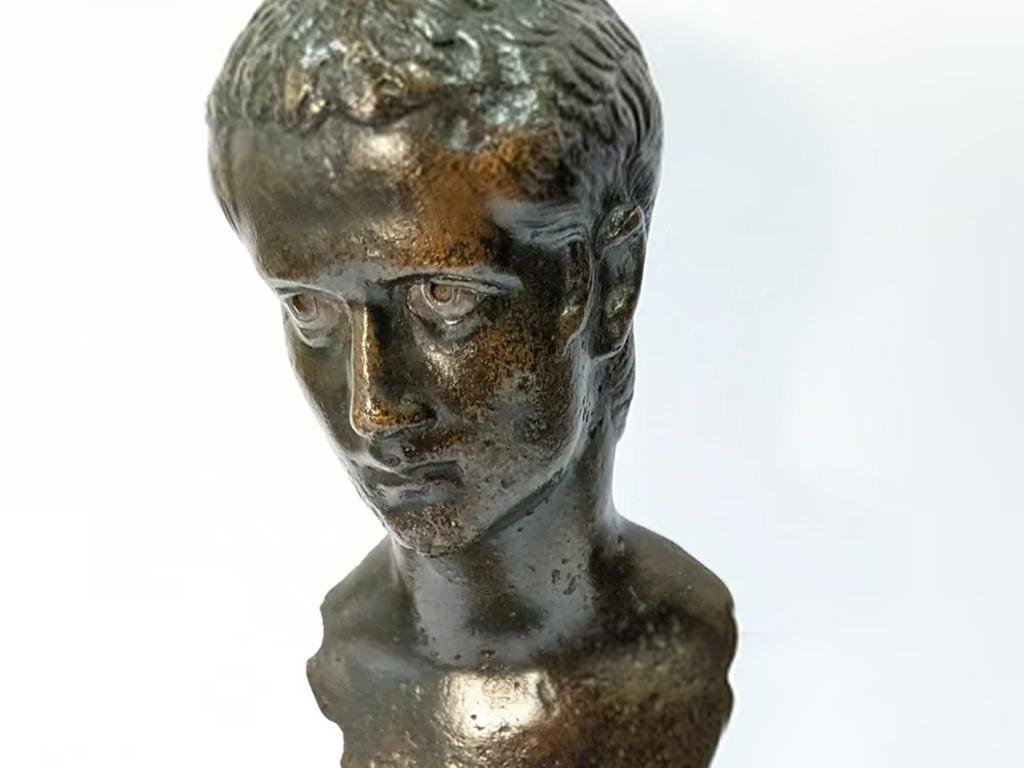A long-lost bronze bust of the Roman Emperor Caligula, which vanished nearly two centuries ago, has been rediscovered and will once again be displayed at Strawberry Hill House in Twickenham, southwest London. This remarkable find concludes a decade-long quest led by Dr. Silvia Davoli, curator at Strawberry Hill.
 Bronze bust of Caligula. Credit: The Schroder Collection
Bronze bust of Caligula. Credit: The Schroder Collection
The bust, originally gifted to Horace Walpole, the renowned writer, aesthete, and Whig politician, by British envoy to Italy Horace Mann, was last seen in public during the ‘Great Sale’ of 1842. The sale dispersed most of Walpole’s prized collection into private hands, leading to the bust’s disappearance for 182 years. Mann had claimed that the sculpture was among the first artifacts excavated from the ruins of Herculaneum, a Roman town obliterated by Mount Vesuvius in 79 CE.
Walpole, who constructed Strawberry Hill House in 1749, considered the bronze bust one of the crowning jewels of his collection. However, after his death in 1797, the artifact changed hands several times. In the 19th century, it was even misidentified as a depiction of Alexander the Great. The trail of ownership eventually led to the Schroders investment company, where the bust resided unnoticed.
Dr. Davoli’s breakthrough came while she was preparing an exhibition on treasure hunting at Strawberry Hill. “I was so happy when I finally saw the bronze and made the link,” said Davoli. She matched a drawing commissioned by Walpole in the 1780s to a bronze head listed in the Schroder Collection’s inventory. The drawing, created by the noted artist John Carter, documented the unique details of Walpole’s treasures, including the veins in the Portoro marble plinth supporting the bust.
 Caligula was notorious for his extravagant spending and rumored Sєxual deviances. Credit: The Schroder Collection
Caligula was notorious for his extravagant spending and rumored Sєxual deviances. Credit: The Schroder Collection
Rupert Harris, a London-based metal conservator, confirmed the bronze’s composition as consistent with 2,000-year-old artifacts. Further validation came from Dr. Dietrich Boschung, an expert on imperial Roman iconography from the University of Cologne. “I’m convinced it is Caligula,” Boschung remarked, pointing to the silver inlays in the bust’s eyes, a common practice for Roman emperors.
Previously, the bust was thought to be a Renaissance piece that somehow became ᴀssociated with the Herculaneum excavation in the 17th century.
Caligula, who ascended to the throne at 24 in CE 37, was notorious for his extravagant spending and rumored Sєxual deviances, including incestuous relationships with his sisters. His short reign ended abruptly when he was ᴀssᴀssinated by his own Praetorian Guard. Despite his vilification, Caligula remains a figure of fascination, inspiring numerous works in literature, film, and art.
The bust’s rediscovery is a significant addition to the small number of surviving bronze depictions of Caligula, with only a handful known to exist, including pieces held by New York’s Metropolitan Museum of Art.
Dr. Davoli said, “The discovery of the Caligula’s head, one of Walpole’s most valued treasures, is truly an exciting event. Each recovered object opens the doors to new hypotheses, helping us better understand the secret life of objects and their movements through the centuries.”
The bust will be a centerpiece at “The Art of Treasure Hunting” exhibition, opening at Strawberry Hill House on June 28. Curators Dr. Caterina Badan and Dr. Davoli are diligently working to unravel the bust’s history, tracing its journey over the centuries—from its discovery at Herculaneum to its period in Walpole’s collection, and eventually to its secluded existence in the Schroder Collection.





